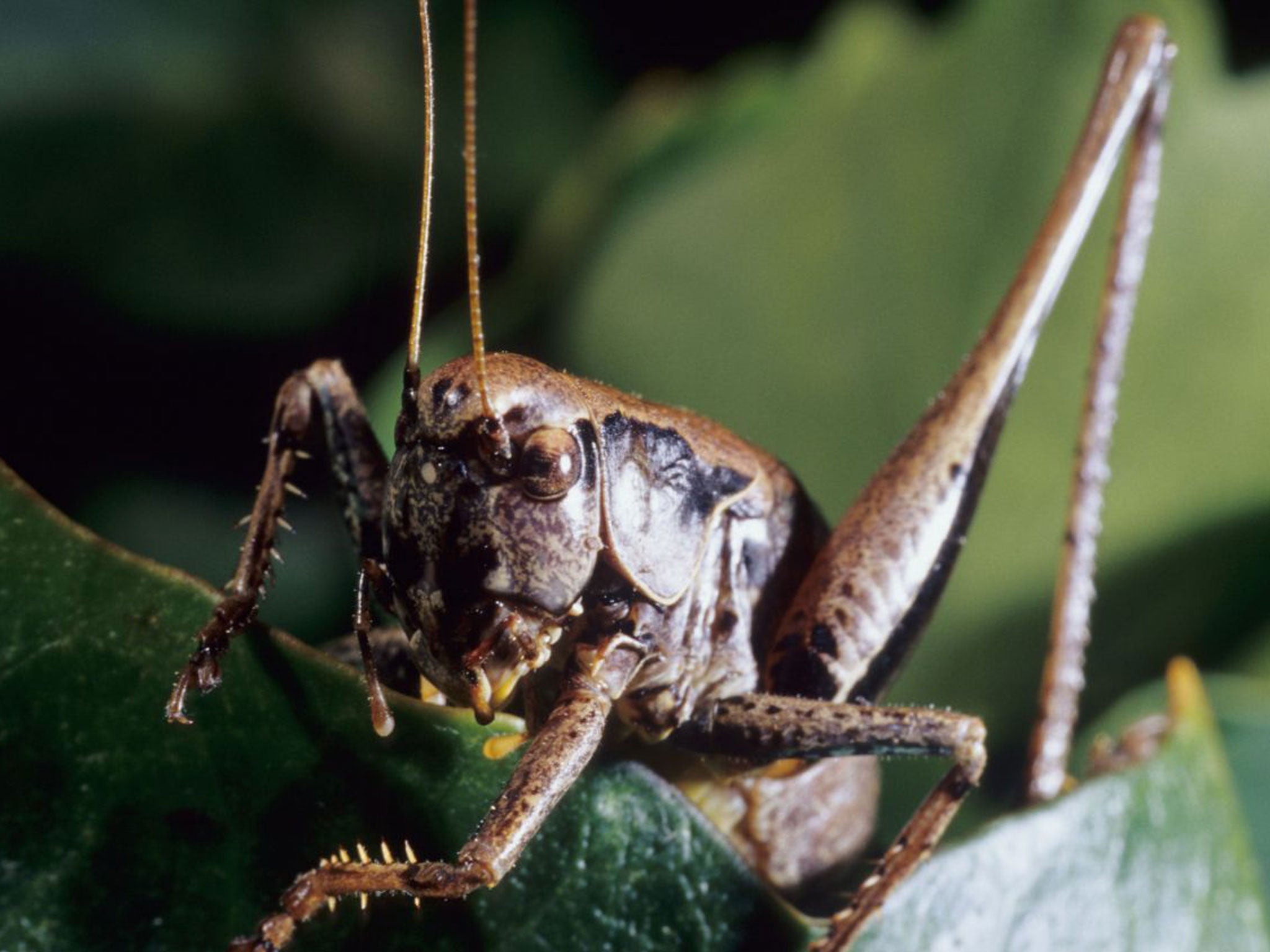Nature Studies: Why Keats’s hedge cricket no longer chirrups autumn’s arrival
Crickets have gone from being among the most everyday insects, to become largely forgotten in Britain outside natural history circles

Your support helps us to tell the story
From reproductive rights to climate change to Big Tech, The Independent is on the ground when the story is developing. Whether it's investigating the financials of Elon Musk's pro-Trump PAC or producing our latest documentary, 'The A Word', which shines a light on the American women fighting for reproductive rights, we know how important it is to parse out the facts from the messaging.
At such a critical moment in US history, we need reporters on the ground. Your donation allows us to keep sending journalists to speak to both sides of the story.
The Independent is trusted by Americans across the entire political spectrum. And unlike many other quality news outlets, we choose not to lock Americans out of our reporting and analysis with paywalls. We believe quality journalism should be available to everyone, paid for by those who can afford it.
Your support makes all the difference.John Keats’s Ode to Autumn is often thought of as one of the most perfect lyrical poems in English and I imagine that many people are familiar with its first line, “Season of mists and mellow fruitfulness...”
It’s a piece of verse celebrating ripeness, the climax of the annual cycle of growth, and all the beauty which goes with that. An autumn of abundance, such as this year’s, which is overflowingly rich in hedgerow and woodland fruits and seeds – just go into the countryside this weekend and take a peek – usually finds the ode trotted out somewhere, for even though it was written after a walk along the River Itchen in Hampshire on a lovely September evening in 1819, its observations are just as resonant today. That is, apart from one, contained in the poem’s last lines, which focus on autumn’s sounds:
And full-grown lambs loud bleat from hilly bourn;
Hedge-crickets sing; and now with treble soft
The red-breast whistles from a garden-croft;
And gathering swallows twitter in the skies.
Urbanised though we have become, we’re all still perfectly conversant with fully-grown lambs bleating, robins singing in gardens, and twittering swallows. But can you put your hand on your heart and say you know exactly what Keats is referring to when he writes “Hedge-crickets sing”?
I doubt it. In the succeeding two centuries, crickets, which belong to the order Orthoptera, the grouping that also contains the closely-related grasshoppers, have gone from being among the most everyday insects, to become largely forgotten in Britain outside natural history circles.
Characterised for us chiefly by their singing – technically, stridulations, buzzing noises made by rubbing their wings together – crickets are divided into two main families, true crickets and bush crickets (the latter known in the USA as katydids. And while we’re on the subject of the USA, did you know that Buddy Holly’s backing group was called The Crickets?).
The best-known of the four British species of true crickets, the house cricket, was once universally familiar, because it needed warmth to survive the winter and sought out people’s fireplaces, where it would sing in the evening; Dickens based a Christmas story around it 'The Cricket on the Hearth'.
Now it is rare, probably because of improved domestic hygiene and the disappearance of coal fires, as is its cousin the field cricket, a famous account of which was given by Gilbert White, the 18th-century Hampshire parson who wrote The Natural History of Selborne. These days, the field cricket is close to extinction in Britain.
The bush cricket family is more extensive, with 10 British species, including the wart-biter, fantastic beast, which allegedly really can bite your warts off, and these are generally a lot more common. There is a fascinating account of them (and of true crickets too, and all the orthoptera, for that matter – all the grasshoppers you ever want to read about) in Peter Marren’s colossal but captivating insect encyclopaedia, Bugs Britannica.
There, you will learn that Keats’s “hedge cricket” was probably the dark bush cricket, Pholidoptera griseoaptera, whose “short chirps”, Marren says, still constitute “the most familiar bush cricket song, in some areas as much a sound of autumn as a solo robin.”
Alas, I have a problem with that. I have reached the age where I simply cannot hear some of the songs of crickets and grasshoppers any more, as the pitch is too high. This was brought home to me vividly last week on a country walk with a friend, the naturalist and writer Mark Cocker, an orthoptera enthusiast, who suddenly stopped and said he could hear a Roesel’s bush cricket singing.
“Where?” I said.
“There,” he said, pointing to the grass right next to us.
“Is it singing now?” I said.
“Yes,” he said.
I still couldn’t hear a thing, although Roesel’s bush cricket is meant to sound vividly like electricity wires crackling. Even worse, when I got home and played clips of it singing on YouTube, I couldn’t hear that either. The frequency is simply beyond my hearing range.
Cricket song is thus the one part of Keats’s autumn that I can’t appreciate; but from the mossy trees bent with apples – just as they are this year, again, go out and have a look – to the clouds of gnats blown about by the wind, I certain appreciate the charm and the warmth of the rest of it.
Join our commenting forum
Join thought-provoking conversations, follow other Independent readers and see their replies
Comments